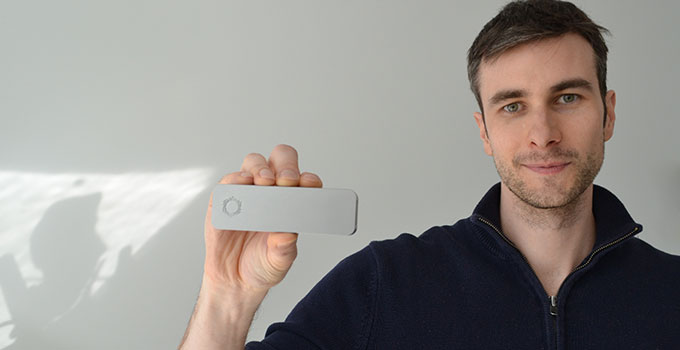
A new nanopore technology for direct sequencing of long strands of DNA has resulted in the most complete human genome ever assembled with a single technology, scientists have revealed.
The research, published today in Nature Biotechnology, involved scientists from the University of Nottingham, University of Birmingham and the University of East Anglia in the UK; UC Santa Cruz at the University of California, Genome Informatics Section of the NIH and the University of Salt Lake City in the USA; and the University of British Columbia and the Ontario Institute for Cancer Research in Canada.
Using an emerging technology – a pocket sized, portable DNA sequencer – the scientists sequenced a complete human genome, in fragments hundreds of times larger than usual, enabling new biological insights.
The authors generated a new method for sequencing “ultra-long” sequences of DNA, more than a thousand times longer than the original reads used to generate the human genome reference sequence in 2001. Recently the authors have used this method to generate the longest ever read sequenced at 1,204,840 bases in length, 8,000 times longer than a typical sequencing read. Scaling the sequencing pore to the size of an adult fist, this is the equivalent to analyzing a 3.85 km (2.4 mile) long rope.
This drastically reduces the complexity of piecing together the genome compared to previous techniques. The authors speculate that these reads and longer ones can be generated routinely in future, enabling human genomes as complete as the reference genome which was the subject of over 20 years of labour and more than $2bn of investment.
As well as sequencing previously uncharacterized regions of the genome, the new analysis provided greater insight into regions of the genome that are responsible for functions such as immunity and tumour growth. This in turn may have a profound impact on clinical practice, for example, detecting large genome rearrangements important in the development of cancer and in determining a person’s inherited repertoire or antibody genes.
The ability to sequence using a portable device that only costs $1,000 may put also personalized genome sequencing into the mainstream.
Dr Jared Simpson, of the Ontario Institute for Cancer Research, said: “In this paper we show how “ultra-long” DNA sequencing reads can give unprecedented resolution of the structure of human genomes. In my lab we’re starting to apply this method of sequencing to better understand the structural and epigenetic changes that occur during the initiation and progression of cancer.”
Professor Nick Loman, of the Institute of Microbiology and Infection at the University of Birmingham, said: “If you imagine the process of assembling a genome together is like piecing together a jigsaw puzzle, the ability to produce extremely long sequencing reads is like finding very large pieces of the puzzle which makes the process far less complex.
“We hope that a pocket-size sequencer is going to give us the ability to bring sequencing much closer to the patient. At the moment sequencing is quite laborious and occurs in expensively equipped laboratories, but in the future we can imagine sequencing using pocket-size devices in GP surgeries, in clinics and even in people’s own homes. The ability to sequence and assemble even very large complex genomes may have value one day in diagnostics and monitoring the evolution of diseases such as cancer and a wide range of infections.”
The study uncovered new information about the major histocompatibility complex, a region of the genome used for tissue typing before a transplant and to help scientists understand immunity. The area is particularly difficult to analyze as it contains many duplicated regions including gene families and repeated sequences. No two individuals – apart from identical twins – have the same sequence in this region in their genome.
The researchers used the ultra-long sequences generated in the project to determine the lengths of individual telomeres for the first time directly from the sequenced data.
Telomeres are the caps at the ends of each DNA strand which protect our chromosomes and play an important role in how our cells age. The older a cell, the shorter the telomeres and the disruption in the pattern of the telomeres DNA is also a significant issue found in many tumours. These regions are also difficult to study because they are highly repetitive, often appearing identical.
The international research effort used the Oxford Nanopore Technologies MinION sequencer. The sequencer, approximately the size of a mobile phone, sequences the DNA by detecting the change in current flow as single molecules of DNA pass through a nanopore – or tiny hole – in a membrane.
The paper can be found at http://dx.doi.org/10.1038/nbt.4060
